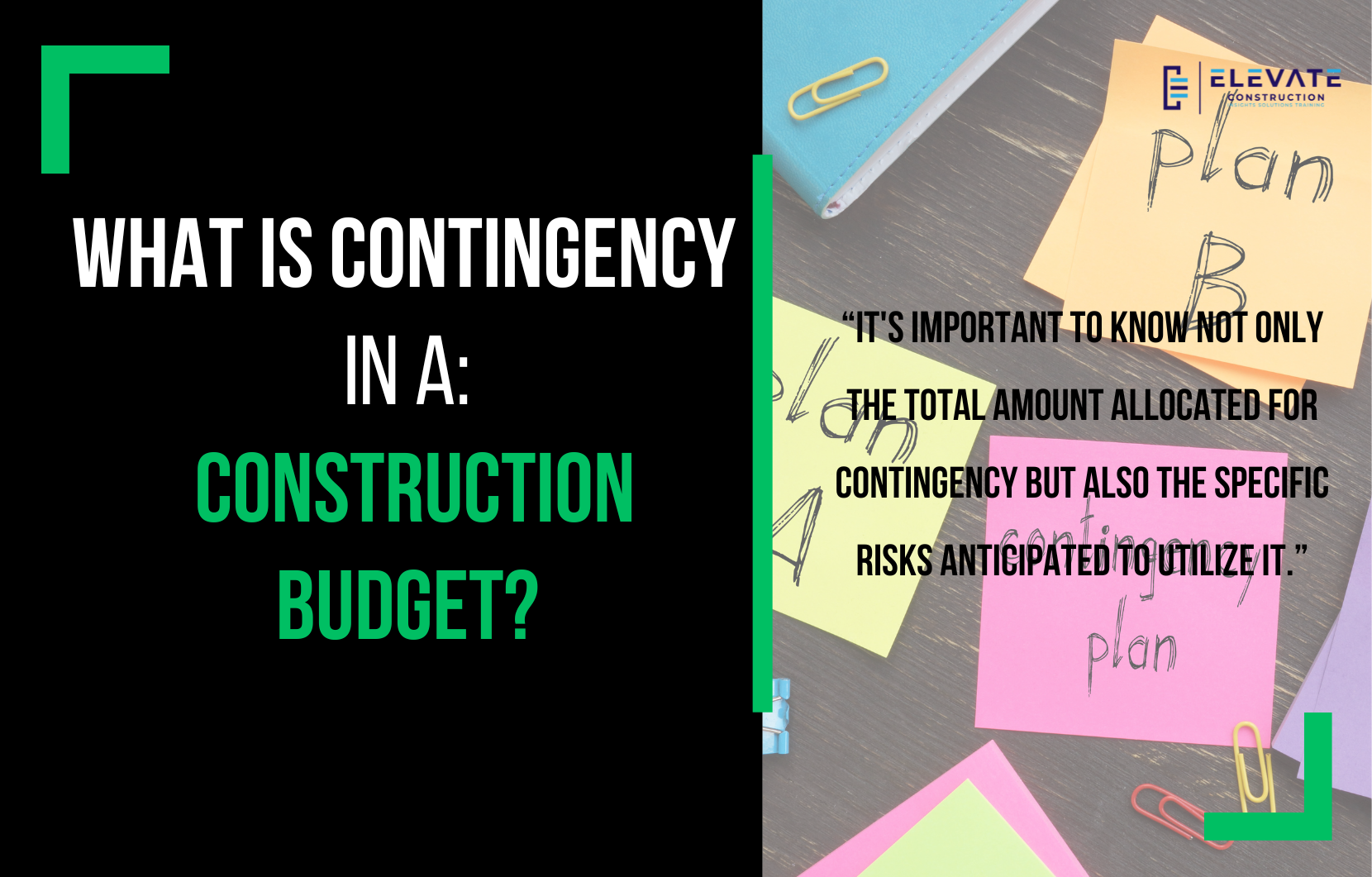In construction budgeting, contingency is your ally. It’s the cushion you rely on to navigate through unforeseen circumstances and events that inevitably arise during a project. Managing contingency effectively is crucial for the success of any construction endeavor. In this blog post, we’ll delve into what contingency means, how it’s utilized, and strategies for managing it effectively.
What Is Contingency in Construction Budgeting?
Contingency in construction budgeting refers to a portion of funds set aside to tackle unexpected conditions or events. It serves as a safety net against uncertainties that could impact the project financially. The primary purpose of contingency is to mitigate the financial risks that may arise during the course of construction, thereby safeguarding the overall project budget or guaranteed maximum price.
During my time as a project superintendent, understanding the projected contingency use was paramount. Projects typically designate a percentage for contingency, whether it’s 3%, 5%, 7%, or 10%. It’s important to know not only the total amount allocated for contingency but also the specific risks anticipated to utilize it.
Importance of Time & Scheduling Contingencies
Just as financial contingency is crucial, so too is time contingency. Time and scheduling contingencies must be factored into project planning. Without them, projects can encounter significant delays and cost overruns. Therefore, alongside financial contingencies, scheduling buffers are essential for successful project management.
Best Practices for Creating Financial Contingency in Construction
One of the best practices for establishing financial contingency involves conducting preconstruction risk analyses. By identifying potential risks and opportunities, project teams can better allocate contingency funds. Techniques such as Monte Carlo analysis can aid in evaluating risks comprehensively, providing insights into the possible financial implications.
How to Handle Risks in Construction
Risks in construction projects can be managed through proper planning, absorption, or coverage. Contingency comes into play when risks cannot be eliminated or absorbed. It acts as a financial buffer to cover unforeseen expenses arising from project uncertainties.
Contractors often project contingency use and maintain a projection sheet to allocate funds for potential change orders or unforeseen events. However, it’s crucial to not merely focus on the total contingency amount but to understand the projected utilization based on risk analysis.
Importance of Properly Allocating Contingencies in Construction
Proper allocation of contingencies requires meticulous planning and coordination among stakeholders. Contingencies should not be used indiscriminately but should be reserved for genuine unforeseen circumstances. Having buy-in from contractors, designers, and owners is essential to ensure contingency funds are utilized effectively.
Where to Use Contingencies
Contingencies can be utilized for a variety of purposes, including unforeseen site conditions, design changes, scope adjustments, weather delays, regulatory changes, material price fluctuations, labor cost changes, and more. It’s essential to have a clear understanding of potential contingency uses and to allocate funds accordingly.
Learn More With These Resources
For further insights into contingency management in construction, I recommend exploring additional resources and blog posts dedicated to this topic. Understanding the nuances of contingency management can provide project managers, superintendents, and construction professionals with the confidence and certainty needed to navigate complex projects successfully.
In conclusion, contingency management is a critical aspect of construction budgeting. By understanding what contingency entails, how it’s utilized, and employing effective management strategies, construction projects can mitigate financial risks and achieve greater certainty in budgeting and scheduling. With proper planning and allocation, contingency becomes not just a financial safeguard but a key component of project success.
If you want to learn more we have:
-Takt Virtual Training: (Click here)
-Check out our Youtube channel for more info: (Click here)
-Listen to the Elevate Construction podcast: (Click here)
-Check out our training programs and certifications: (Click here)
-The Takt Book: (Click here)
Discover Jason’s Expertise:
Meet Jason Schroeder, the driving force behind Elevate Construction IST. As the company’s owner and principal consultant, he’s dedicated to taking construction to new heights. With a wealth of industry experience, he’s crafted the Field Engineer Boot Camp and Superintendent Boot Camp – intensive training programs engineered to cultivate top-tier leaders capable of steering their teams towards success. Jason’s vision? To expand his training initiatives across the nation, empowering construction firms to soar to unprecedented levels of excellence.
On we go!


